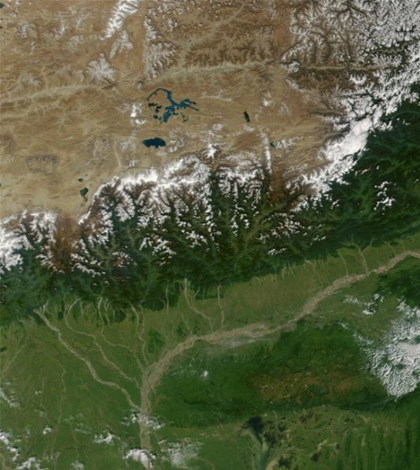Black Carbon On Himalayas And Tibetan Plateau Mostly From Asia

Snow and ice from the Tibetan Plateau and Himalayan range are an important source of water for many people through India. (Credit: Jacques Descloitres / NASA)
A study from Pacific Northwest National Laboratory examined the effects that black carbon has on the Himalayas and Tibetan Plateau. Black carbon is a product of incomplete combustion that absorbs more solar energy when on the snow than it blocks when suspended in the air, driving early snowmelt and glacial retreat.
The researchers used the Community Atmosphere Model version 5 to track black carbon emissions by location and sector (biofuel/biomass versus fossil fuel). The team was also able to generate three-dimensional paths that various black carbon streams took from source to destination. The researchers found that South Asia’s biofuel and biomass produced the greatest amount of soot for the entire plateau in all seasons except summer, when East Asia’s fossil fuels took the top spot.
This study’s model improves on those before it by allowing users to run multiple simulations at once to determine which areas should cut emissions to see the greatest climate benefits. With a model that can determine who burned what, further research may allow for finer-scale emissions tracking that could lead to targeted punishments for errant emitters.
Top image: Snow and ice from the Tibetan Plateau and Himalayan range are an important source of water for many people through India. (Credit: Jacques Descloitres / NASA)





0 comments